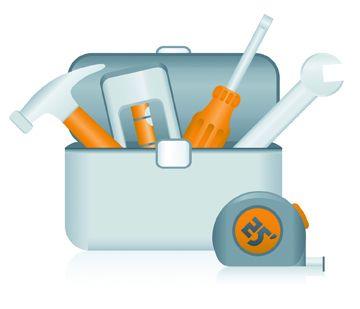
December 2016 Management Toolbox

5 Ways to Stop Procrastinating
There are myriad reasons why people put off doing the things they should do, or need to do: lack of time, lack of interest and lack of financial resources are a few that spring to mind. And when it comes to critical actions – such as making a career change or having a difficult conversation with a loved one – fear is often the greatest reason underlying a person’s hesitation to make a move. The causes of procrastination are not difficult to figure out, but if you regularly find yourself putting off work or other important tasks, following are five helpful ways to break the habit.
1. Start with small steps. It is not uncommon to procrastinate when you are staring down a complex job. If you feel overwhelmed by a project you need to complete, break it down into a series of smaller, more manageable tasks. Then, create a timeline and assign a deadline to each task. Seeing your work as a series of steps, each with its own due date, will help to calm your mind, keep you on track and provide encouragement that the work can be done.
2. Do the most difficult work first. Sometimes procrastination gets confused with laziness, but what commonly happens is that people put off doing the most challenging or unpleasant parts of their project in favor of doing other tasks that take less time, are easier to complete or are more enjoyable to do. That approach is understandable, but try thinking of the process like climbing a mountain. Once you make it through the toughest work – trekking to the top – you’ll feel a real sense of accomplishment, and the rest of the work – going back down the mountain – should feel like less of a struggle, comparatively speaking.
3. Change your surroundings. Your environment can have an impact on your inspiration and motivation levels. If you feel the setting in which you find yourself – for instance, your office or home workspace – is helping you to procrastinate, change the energy. Rearrange the furniture, add items that positively influence you and remove those that don’t, or even move to a different space if possible.
4. Create accountability. It’s simple to put off working toward a goal if you don’t tell anyone else about your efforts. So, share your objectives with as many people as you feel comfortable telling. Then, when you run into those people or talk to them on the phone or online, they will likely ask about your progress. Having others checking in on you is a great way to push yourself to make that progress.
5. Delete your distractions. Now, more than ever before, there are so many ways to distract yourself from what you should be or need to be doing, things like scrolling through your social media feeds, playing a video game you downloaded on your cellphone or watching a new TV program that you recently recorded on your DVR. Get rid of as many of those distractions as possible so you can focus on your goal. You know what the biggest diversions and interruptions are for you – do what it takes to eliminate or mitigate them.
*****
Ring in the New Year with New Resolutions
Another year has come and gone, and now is the time when many of us are thinking about what 2017 has in store. Although not everyone makes resolutions for the new year – some people make them when they celebrate a birthday, and others opt not to make resolutions at all – it’s as good a time as any to think about what you’d like to accomplish in the next 12 months.
There are a few tips to keep in mind to help ensure you accomplish your resolutions. The first is to limit the number of resolutions you make; trying to do or change lots of things at once can quickly lead to failure. A second tip is to make each of your resolutions a “stretch” goal, that is, a goal that takes effort to reach but isn’t outside of your capabilities. And finally, don’t forget to post your resolutions in a place where you can easily see them. For instance, you might consider writing them on a white board in your office or home study. Being able to regularly review your resolutions will help you to track your progress.
As for the resolutions themselves, you probably have quite a few ideas, especially if making them is one of your annual traditions. But in the event you are struggling to come up with ideas, or if you are simply looking for suggestions, here are some ideas to think about.
Find new or better ways to reduce stress. 2016 was a difficult year for many people, and sometimes it’s tough to know how to handle stress in a healthy way. Work to add more skills to your stress-relief arsenal. Maybe that means spending more time with loved ones and those who make you laugh. Maybe you want to start hiking more or learn to meditate. Think about what will help you most and resolve to incorporate those actions into your life.
Watch less and read more. It’s no secret that most of us spend a lot of time around technology. Perhaps 2017 is the year when you cut the cord a bit more often, turning off your TV, laptop, phone and tablet more frequently in favor of reading books, newspapers and magazines. And if that seems appealing, strongly consider reading as much as you can about what is going on in your industry. What skills are currently in demand, and what future trends do you see? In terms of your professional and technical skills, are you ahead of the curve or behind the times? Another resolution could be enrolling in a training course to ensure you have the most up-to-date job knowledge and abilities.
Whatever resolutions you decide upon – whether they’re the ones listed here or something else, like facing a longtime fear or mentoring a young lineman who has just joined your company – have a happy, healthy, prosperous 2017.

